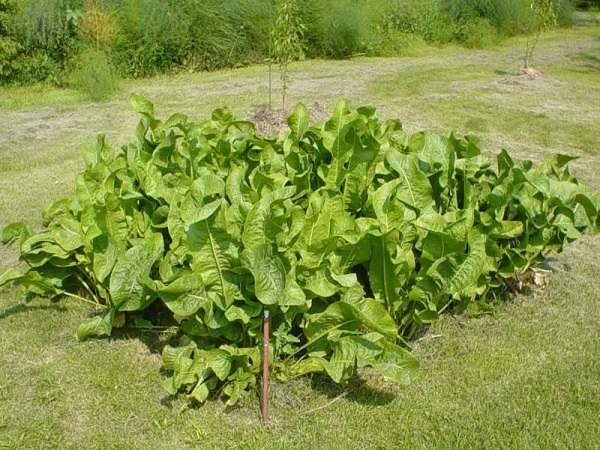
There seems to be no middle ground when it comes to enjoying spicy horseradish. People either love it or hate it. If you happen to be a fan, you can grow horseradish in your own backyard.
Horseradish is grown from pieces of root known as sets. You can grow horseradish from root cuttings purchased online or from a seed catalog, or you can acquire pieces of root from a friend who grows horseradish. Any gardener who grows horseradish will have plenty of root cuttings to share. Every little bit of root will grow a new horseradish plant, but you’ll grow larger roots if you start with larger root cuttings. Root sets the width of a finger and about a foot long are ideal for planting.
Pick a spot for your horseradish where it can grow undisturbed and make sure it is not growing right next to other valuable plants. Horseradish can spread and invade nearby plants. You can grow horseradish just about anywhere except spots that are heavily shaded or in soil that is constantly soggy. If you are concerned that the horseradish will invade a nearby plant’s territory, it can also be grown in a large pot with ample drainage and a fluffy, well-draining potting mix
Plant the roots either in the fall or early spring, after tilling or turning the earth to a depth of at least 12 inches. Remove any stones from the soil to ensure that your horseradish will grow straight roots. This will also make harvesting easier. Compost may be mixed into the planting hole, but horseradish will grow with or without extra fertilizer.
Plant horseradish roots about 10-18 inches apart, with the crown about 4-6 inches below the soil surface. The crown is the wide, upper end of the root and this is where new top growth will appear. Once planted, water the area well.
Once the roots have been planted, you can sit back and relax. You can grow horseradish in abundance without babying the plants. Horseradish is rarely attacked by insects, and it is generally free of disease.
Horseradish is harvested by digging up the roots once they have grown large. For the best horseradish flavor, dig the roots after the first frost in the fall. Horseradish roots can also be left in the ground and harvested as needed throughout the winter.
Mike McGroarty is the owner of McGroarty Enterprises and the author of several books. You can visit his website at Freeplants.com and read his blog at Mikesbackyardnursery.com.
Related Articles & Free Email Newsletter Sign Up
How to Deal With Blossom End Rot & Split Tomatoes
How to Grow Blueberries in Your Backyard
Why Fruit Trees Don’t Produce Fruit and How to Fix It



Comment here